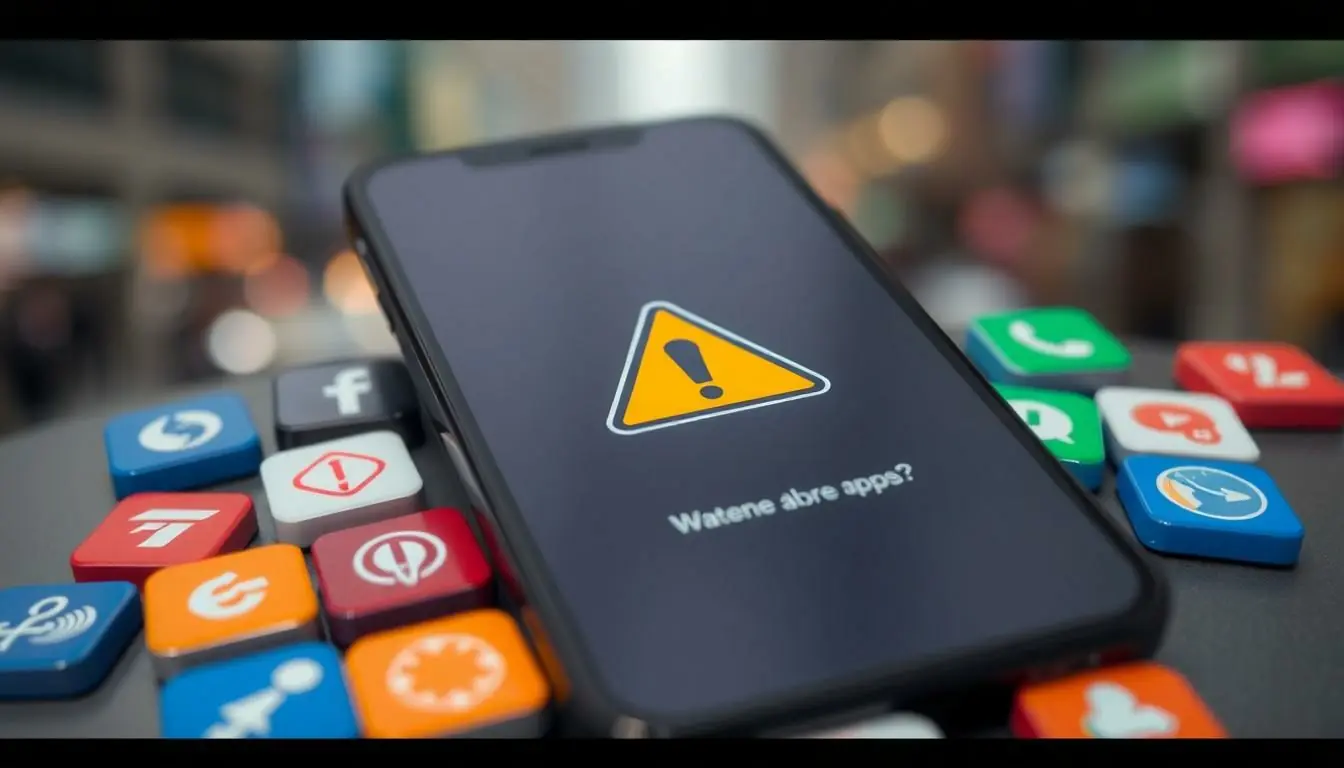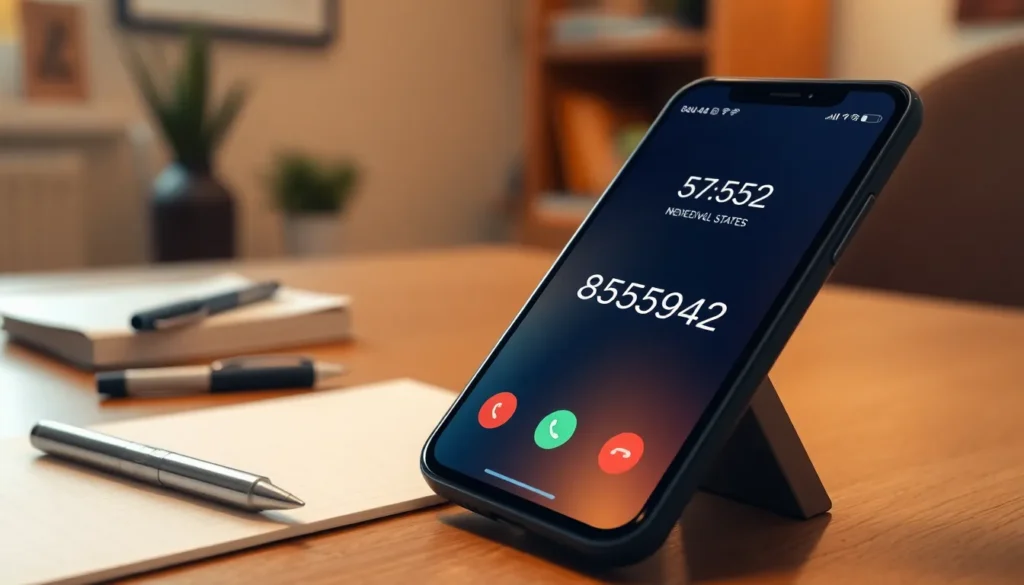Table of Contents
ToggleIn a world where smartphones are practically an extension of ourselves, the last thing anyone wants is a malicious mobile app sneaking in like an uninvited guest at a party. These sneaky little troublemakers can steal personal info, drain bank accounts, and even turn your device into a digital zombie. Talk about a buzzkill!
As users scroll through endless app stores, it’s easy to overlook the red flags waving like a neon sign. With the promise of free games or productivity boosters, these apps lure unsuspecting victims into their clutches. But don’t worry; knowledge is power! Understanding the risks associated with malicious apps can help keep your device—and your data—safe from harm. So grab your digital armor and let’s dive into the wild world of mobile app security.
Understanding Malicious Mobile Apps
Malicious mobile apps pose significant threats to user security. These apps often target personal and financial information.
Definition and Characteristics
Malicious mobile apps refer to applications designed to harm users by stealing personal data or compromising device functionality. Common characteristics include unexpected behavior, such as excessive battery drain, unusual data usage, or permissions beyond what the app requires for its function. Additional indicators involve intrusive ads or significant alterations to device settings. Users often overlook these signs, assuming that popular apps carry no risk.
Types of Malicious Mobile Apps
Several types of malicious mobile apps exist. Virus apps infect devices, replicating and spreading to other software. Adware apps bombard users with unwanted advertisements, hindering usability. Spyware apps secretly monitor user activities, gathering sensitive information without consent. Ransomware apps restrict access to device content, demanding payment for restoration. Trojans disguise themselves as legitimate software, creating major security vulnerabilities. Understanding these types aids in identifying and avoiding malicious apps.
Common Threats Posed by Malicious Mobile Apps

Malicious mobile apps present significant risks to users. Understanding these threats helps in preventing serious repercussions.
Data Theft
Data theft occurs when malicious apps access personal information without consent. Apps disguised as legitimate versions may harvest contacts, messages, and photos. Even location data isn’t safe; it can reveal a user’s movements and habits. Beyond personal details, financial information like credit card numbers can also be stolen. Such an incident can lead to identity theft or unauthorized transactions. Recognizing signs like unusual permission requests or unexpected app behavior can aid users in avoiding these threats. Safeguarding personal data requires vigilance when downloading apps from untrusted sources.
Financial Loss
Financial loss from malicious apps is a pressing concern. Some apps may masquerade as free tools but include hidden charges. Others can install malware that initiates unauthorized purchases. Users often find themselves subscribed to premium services they never intended to join, incurring unexpected fees. Ransomware apps lock users out of their devices, demanding payment for access. Employing robust security features, such as two-factor authentication, can mitigate these risks. Users should carefully review app terms and permissions to minimize potential financial damage.
How Malicious Mobile Apps Operate
Malicious mobile apps operate through various methods designed to exploit users’ trust and device vulnerabilities. Understanding these methods enhances awareness of potential risks.
Exploitation Techniques
Exploitation techniques vary across malicious apps. One common approach involves requesting excessive permissions that aren’t necessary for the app’s functionality, allowing attackers access to sensitive information. Some apps track user behavior, gathering personal data without consent. Additionally, malware can hide disguising its presence to remain undetected, enabling ongoing data collection. Users may also encounter phishing attempts through malicious apps, tricking them into providing personal details. This manipulation emphasizes the need for vigilance when granting app permissions.
Delivery Methods
Delivery methods for malicious apps include several strategies. Often, attackers distribute these apps through unofficial app stores that lack strict security measures. Some developers leverage social engineering, tricking users into downloading apps through enticing offers or advertisements. Exploiting vulnerabilities in legitimate apps also serves as a delivery method, allowing malware to spread through seemingly safe platforms. Drive-by downloads represent another approach, where users inadvertently install malicious software by visiting compromised websites. Awareness of these delivery methods helps users make informed choices about app installations.
Protecting Yourself from Malicious Mobile Apps
Protecting against malicious mobile apps involves adopting proactive measures. Recognizing the risks associated with app downloads can significantly enhance mobile security.
Safe Download Practices
Only download apps from official app stores, such as Google Play and Apple App Store. Checking app reviews and ratings can reveal user experiences and potential concerns. Research the developer’s credibility before installation, as well-known developers typically prioritize user safety. Users should also read permissions before granting access; excessive permissions can signal a malicious intent. Regularly updating apps ensures users benefit from security patches and improvements. Avoiding third-party app stores reduces exposure to malicious software designed to harm devices.
Using Security Software
Employing security software provides an additional layer of protection. Such software can detect and block malicious apps before installation. Regularly updating security applications ensures they remain effective against the latest threats. Many security programs offer features like real-time scanning, helping identify potential threats quickly. Users should consider playing it safe by enabling security features on mobile devices, such as app verification tools. Relying on security software in conjunction with safe download practices enhances overall protection against risks posed by malicious mobile apps.
Malicious mobile apps pose significant threats to personal security and financial well-being. Users must remain vigilant and informed about the risks associated with these apps. By understanding the common characteristics and types of malicious software, individuals can better identify potential dangers before they compromise their devices.
Adopting proactive measures such as downloading apps from trusted sources and carefully reviewing permissions can significantly reduce the likelihood of falling victim to these threats. With the right knowledge and tools, users can navigate the mobile app landscape safely and protect their valuable data from malicious intent. Prioritizing mobile security is essential in today’s digital age where threats are ever-evolving.




